Performance
We did fairly simple line-rate testing pushing traffic through the port pairs on the system. We just wanted to validate the port speeds.
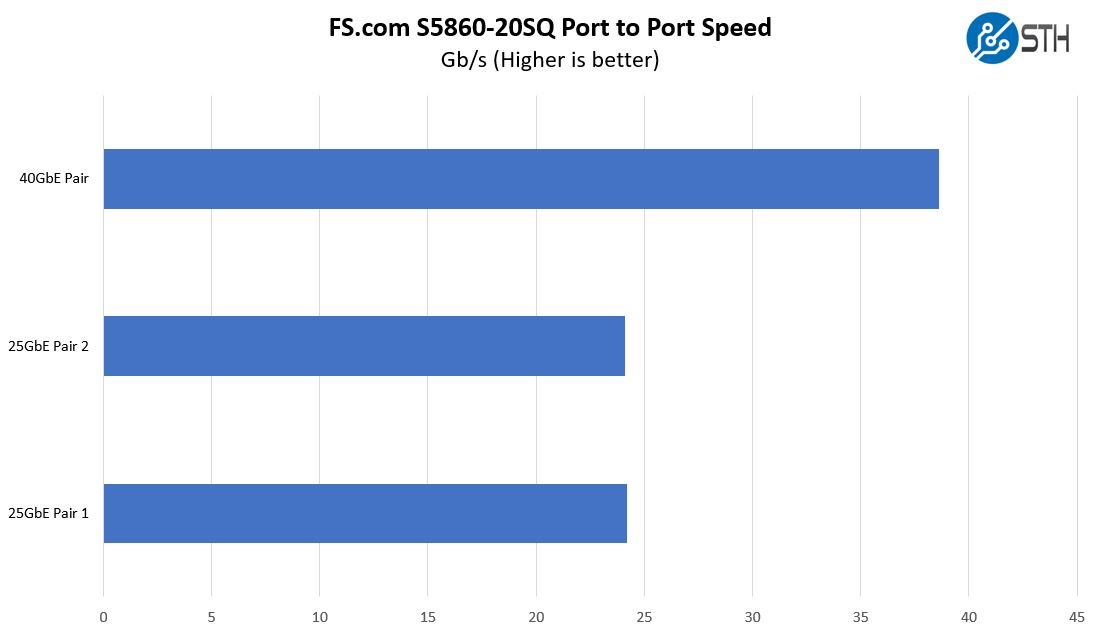
We also loaded the ports with 10GbE traffic.
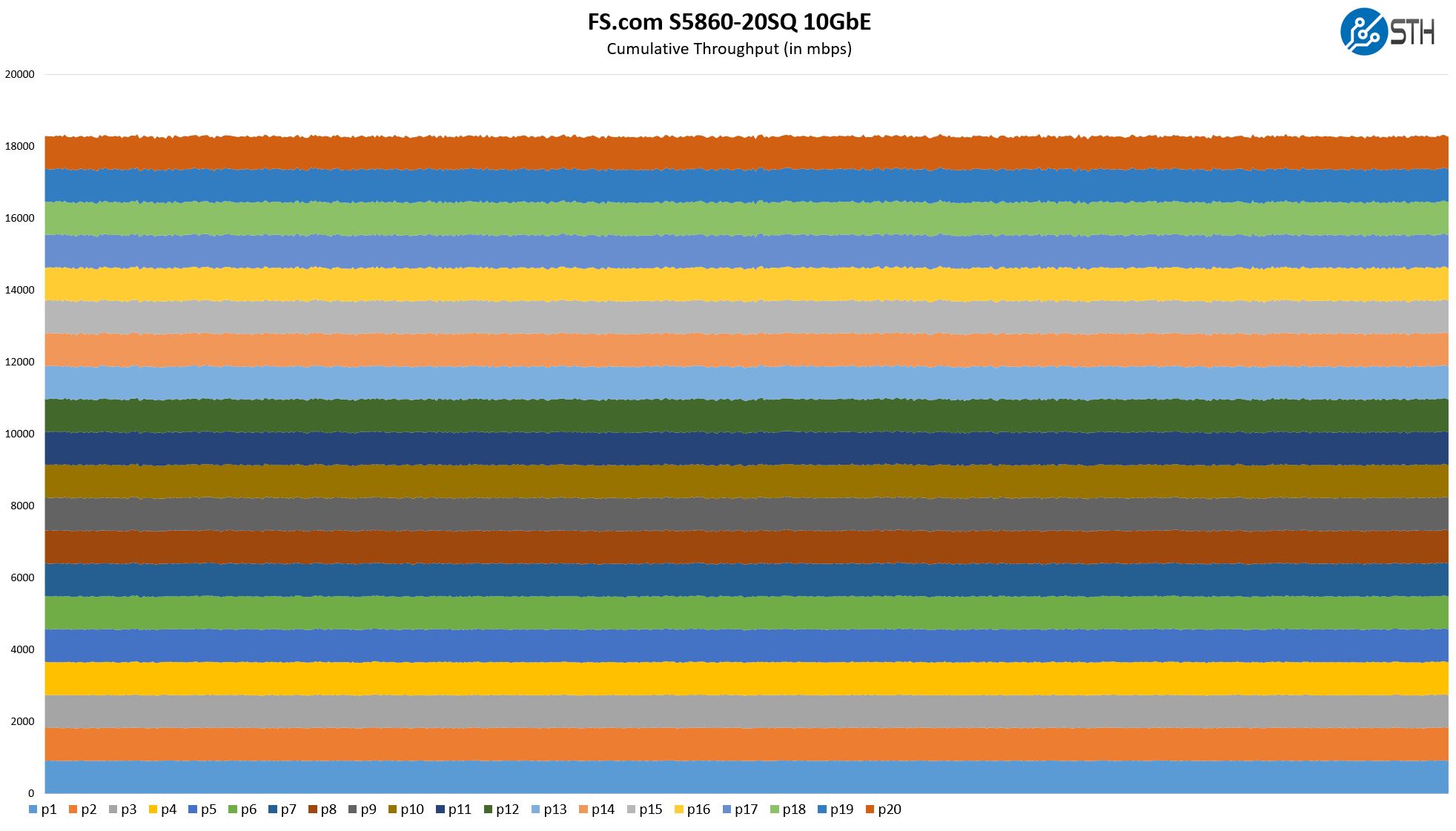
Overall, this is not a surprising result. We know many of our readers will want to test L3 capabilities, but there is a lot to test with that as the applications get more complex given the available features (e.g. do we test turning as many on as we can?) so we did not have the best test case. As a L2 switch, it seems to perform well. Something to improve upon in future reviews.
Management
Management was perhaps the biggest surprise of this switch. First off, there was a CLI as one would expect from a switch. Broadcom maintains a base OS for its switches so this will feel largely familiar to those who have used this solution.
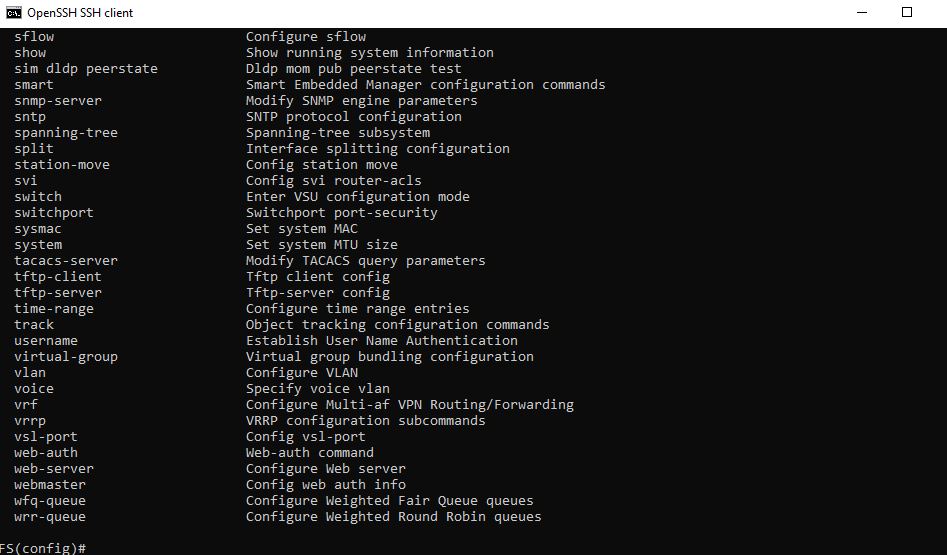
One can also use external tools. FS has an example using Zabbix to monitor and manage the switch. What we wanted to focus on was the truly surprising feature: a WebGUI.
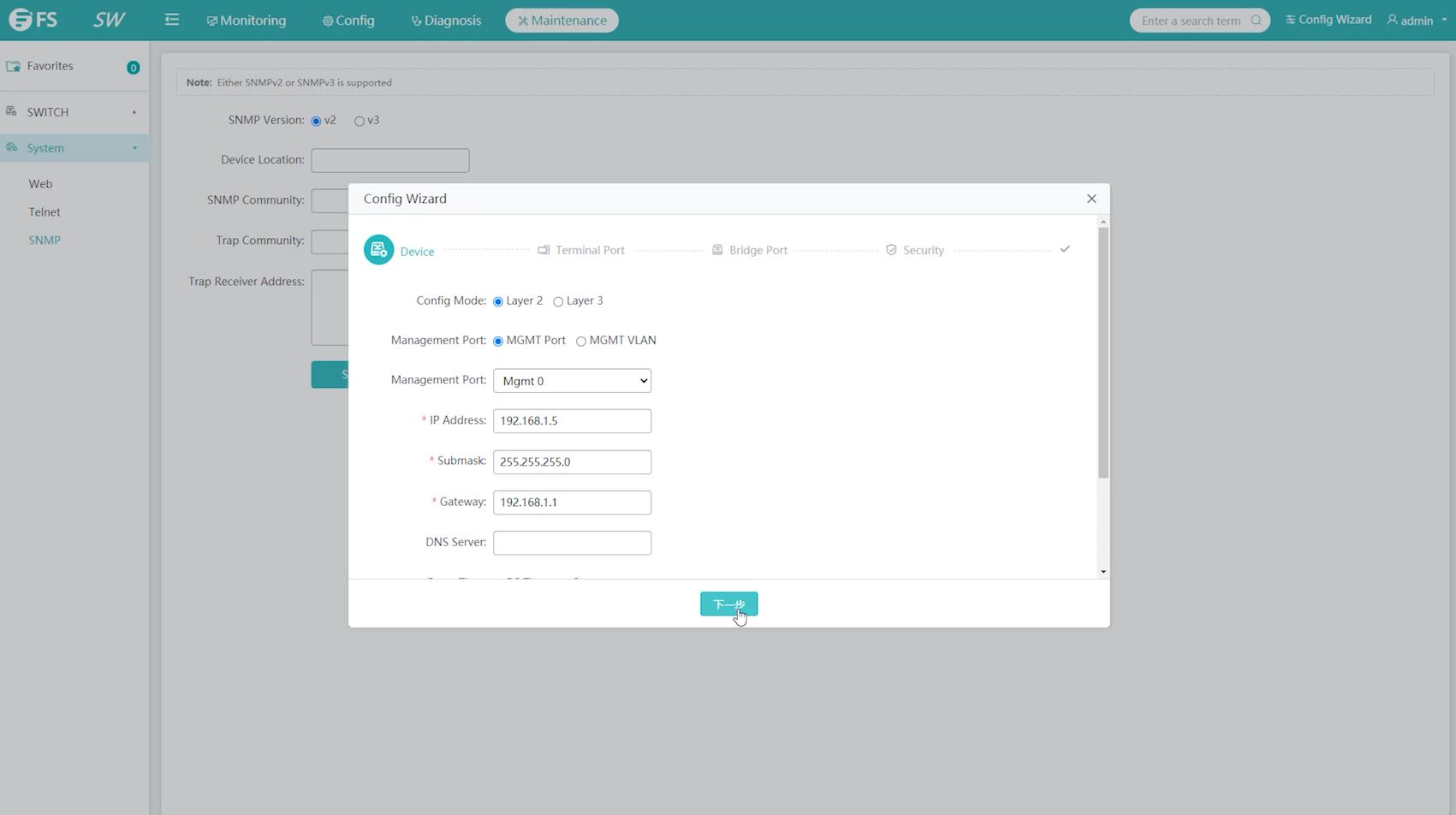
Setting up the switch one can use admin/ admin but is prompted for a new password. Then there is a configuration wizard that has different steps for Layer 2 and Layer 3 setups. Perhaps the one item that needs to be changed is that the default IP of the management interface was 192.168.1.1. For many, this is not an issue. On the other hand, it is usually a leading practice not to use this IP address for a switch since that is often used by many home/ SMB networking solutions as the default. If you plug the switch into a basic network just to configure that has a 192.168.1.1 gateway, chaos can ensue. Instead, you will want to directly connect to the management interface using a static IP and then configure the switch from there. Given the target market for this switch, either a DHCP address or default that is another address would be a better option to make setup easier for some customers. Again, there are many ways that this is prevented, but generally, this IP is avoided by switches in the industry because of that. It is also a simple fix for FS to implement.
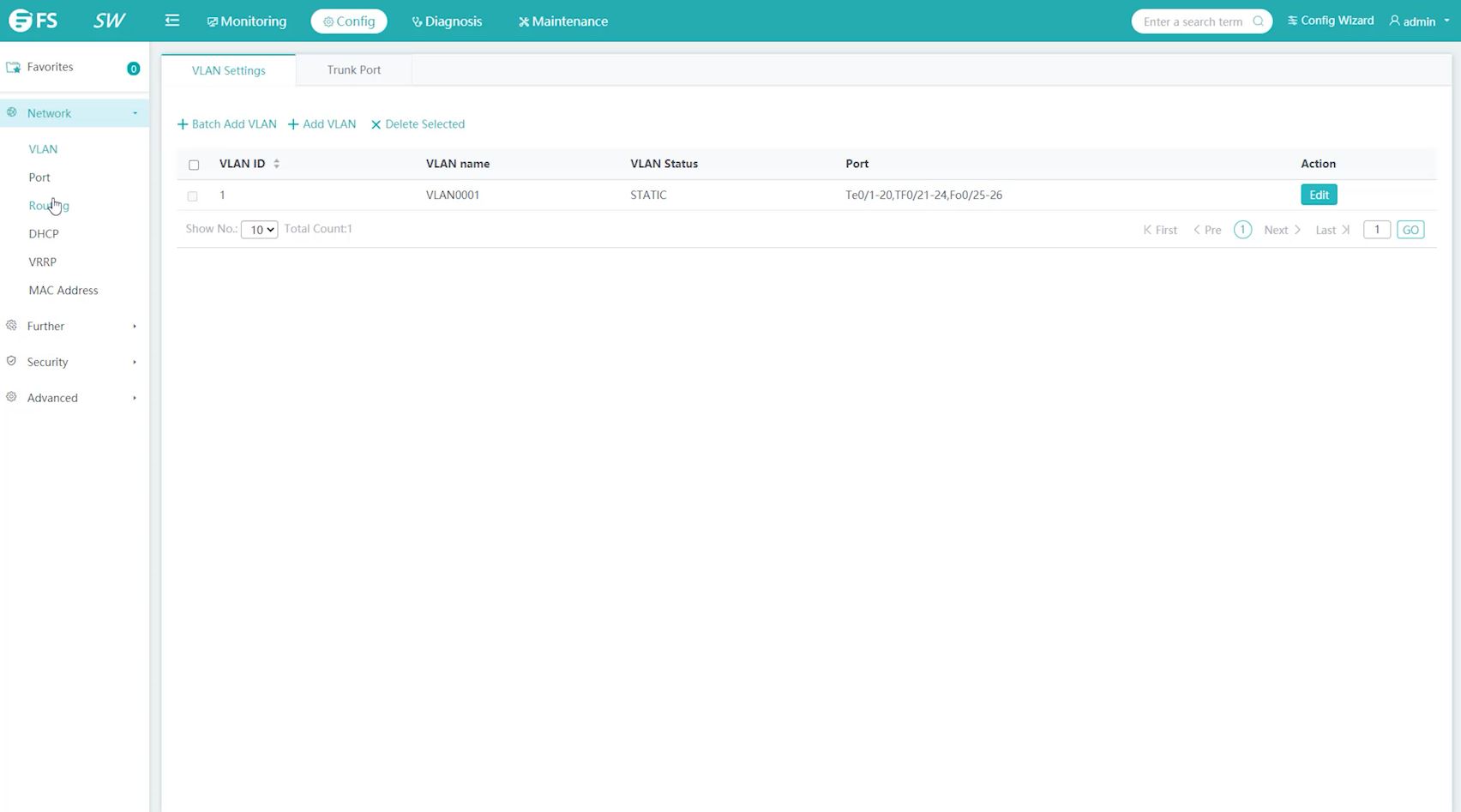
The web interface was very easy to use. It was not necessarily as fast as some solutions on the market, but it was relatively responsive.
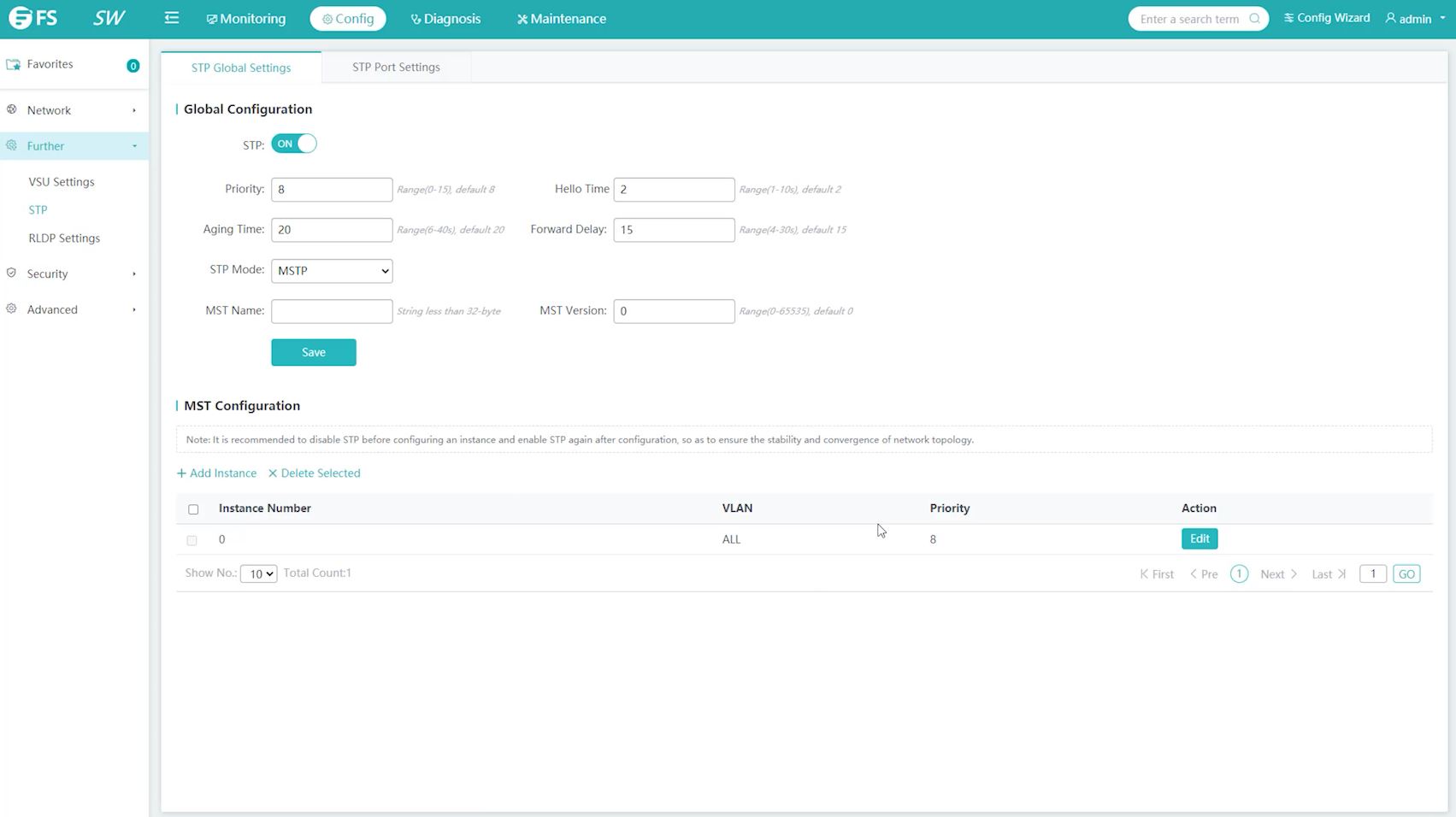
One item we noticed was that the web interface also felt more modern than some switches we have used. Assuming many admins will not have had a previous FS switch, then most using this switch will not have used this interface prior to this initial experience. It was certainly laid out reasonably well. We also like that it did not require web registration like newer Netgear ProSAFE switches to get to this level of functionality.
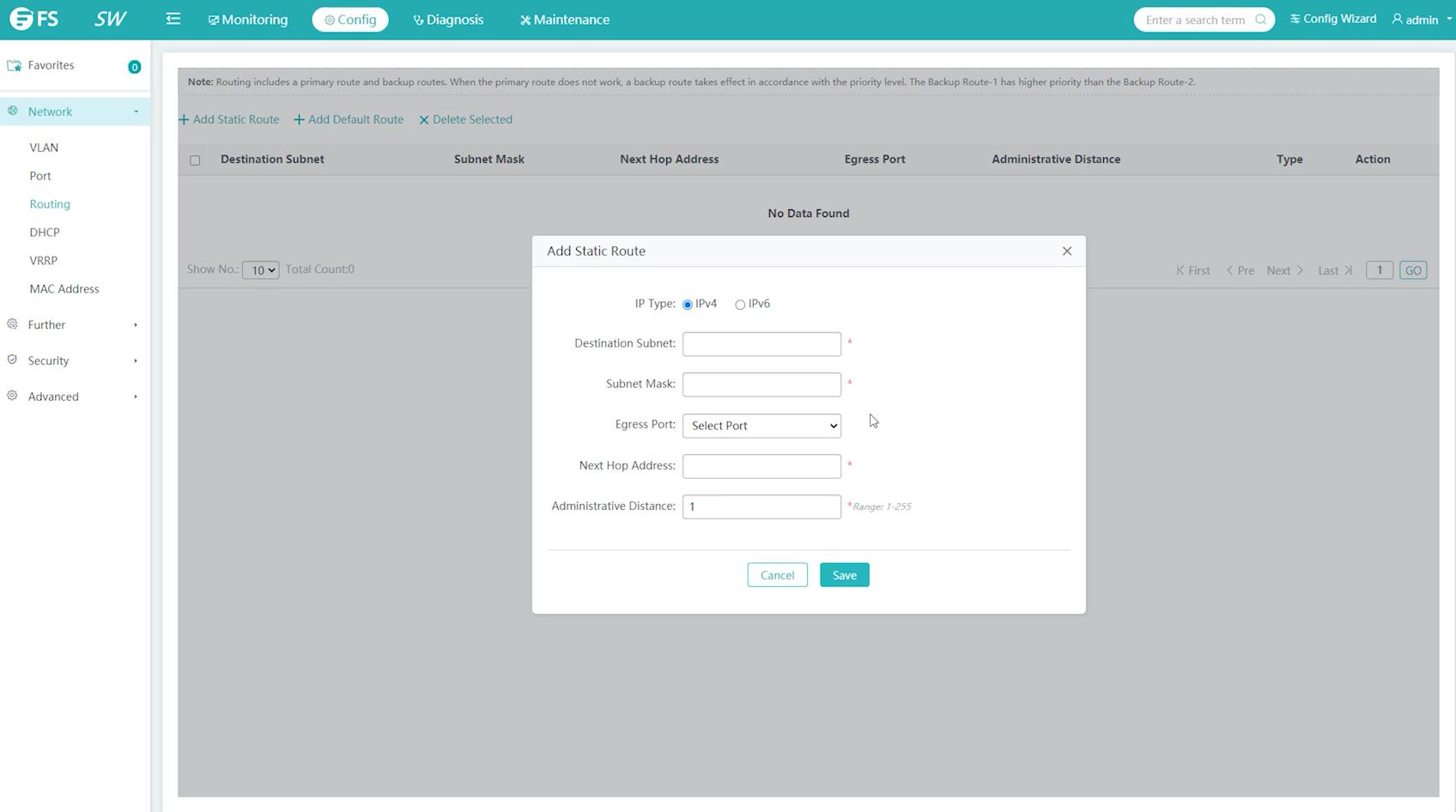
One item we noticed is that there seems to be more configurability in the CLI than in the web interface. That is fairly common. At the same time, it seems like FS will cover a large set of use cases in the web interface even if not all of them can be addressed.
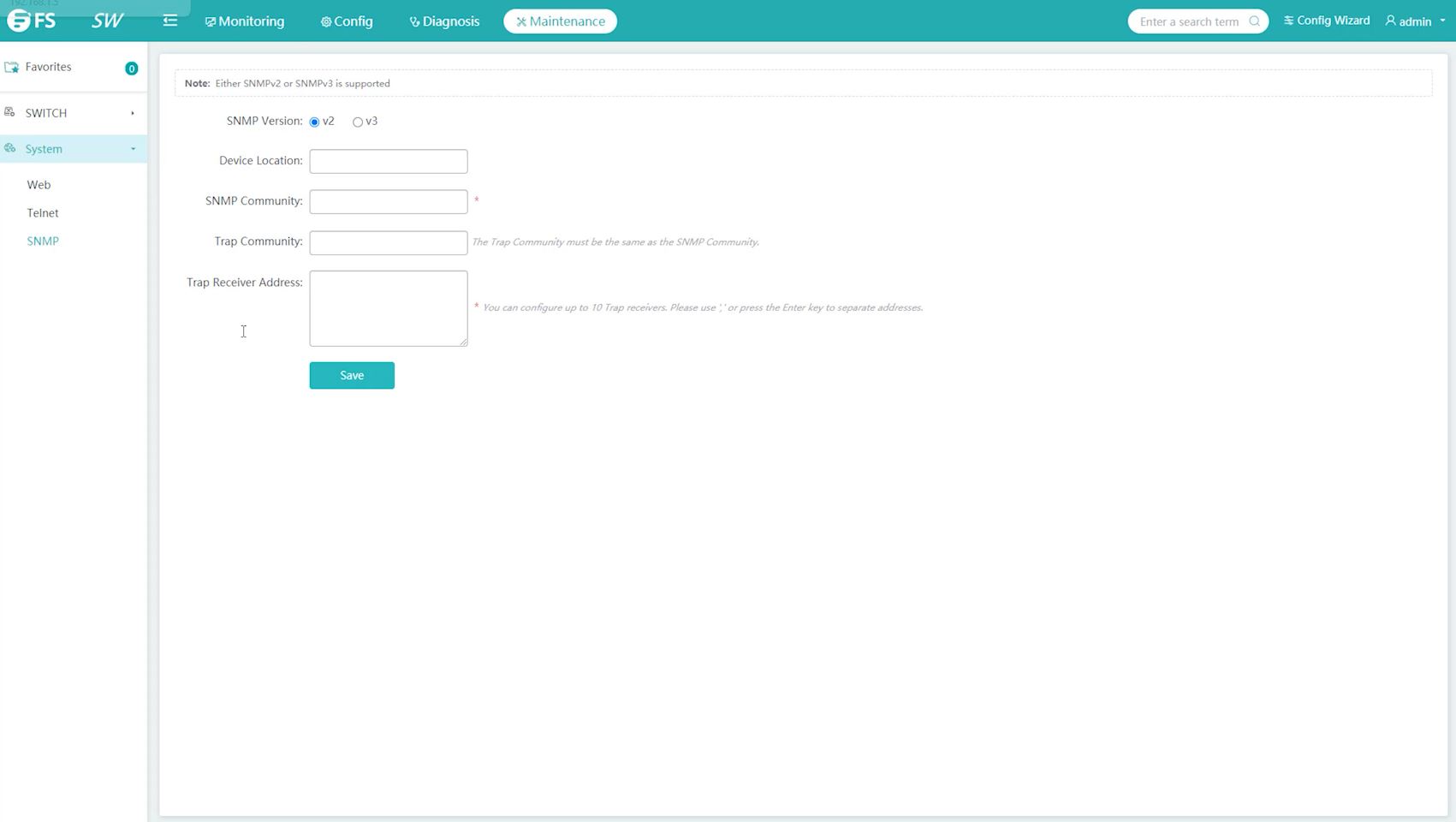
Since this is the web format, we cannot show 100 screenshots in a review. One can see more on the web interface in our video on this switch where we have a section going through more screens. It is certainly not a perfect solution. What it does do is adequately present an easy-to-navigate solution to get started with this switch. We will often see SMBs purchase switches in this ~$50/ port class. Those are the same businesses that often do not have full-time network admins and where this web interface is vitally important. We know many STH readers will immediately go into the CLI, but this is a differentiator versus purchasing a second-hand data center switch in this price range.
Next, we are going to discuss power, noise, and our final words.




FS has great a selection of bare-metal switches from 10G all the way up to 400G. And all of them are extremely cheap compared to big vendors. It would be great if you could review some of them.
We’re considering going with their switches on a new project. Previously we used supermicro bare-metal switches. They worked great but they’re based on older broadcom chips that lack some important features and there’s not much to choose from anyway. One 10G and one 100G switch. FS has plenty to choose from.
It is nice to see some performance numbers and gui features, but I do miss feature testing in the networking reviews here.
I would have been very helpful to see what features it has and if they are actually working. Stacking, mlag, l3, dynamic routing, vrrp, stp, vlan and vlan in vlan, security, login possibilities (not just local accounts), logging, 802.1x features (although not that important for a ToR switch like this).
I have looked at FS.com switches for a while, but there is too little information around the web if the features really work and if it is stable or not…
Bought 2 of these switches about 6 months ago. So far they’ve worked flawlessly. We’re using them for L2 and light L3, with about 10 VLANS. No crashes, no problems so far. CLI is a Cisco clone. Web GUI is terrible. Beats not having one, but not by much. Obvious spelling errors, etc. No firmware updates posted on their website, at least not the last time I looked. Minor imperfections with syslog. Basically a good deal for the price, but the lack of firmware updates makes me nervous on how well they are maintaining their platform.
“On noise, we measured around 42W at 1M …”
I am guessing you mean dB? I use an 8 port 40 gig Mellanox IB switch at home, had to swap out its little jet engine fans to get some peace. So I was wondering about noise here. Thanks for reporting it!
An impressive switch, can someone suggest same configurations but instead of 16xSFP+, RJ45 10G Base T.
I know using SFP+ to RJ45 Copper Modules will add power overhead & heat. DO you thin it is a good idea to install Qty (10) of SFP+ to RJ45 Copper Modules to compenstae for the missing RJ45 ports
Thanks and advance
Def some stuff in video not here.
How do you compare this FS switch with cisco switch with similar price range/spec (say sx350x-24F) on performance prospective?
This video review by Patrick (STH) will certainly have me looking at this multi featured Very Hi Speed managed switch.
I have had in my network rack since 2017 an FS 24 gigabit port managed switch with 4 SFP+ combo ports. Was only like $160 back then in 2017. It hasn’t been retired yet because of 4 fiber connections. It is a very “easy to use” managed switch and supports link aggregation, too.
And I’ve used a few different transceivers in the SFP+ cages over the years and they have worked flawlessly.
I really like the FS website videos and they have been very helpful for me.
On another topic their 1Gb multi media converters are reasonably priced and work 24x7x365 without a hiccup.
So for my S&MB deployments FS for gigabit along with QNAP for hi speed 2.5 & 10Gb applications have become my mainstays.
Patrick thanks for the excellent review.
Since there are so many SPF+, etc cages, I’m thinking I would feel more confident from an expected heat generation standpoint to use fiber optic transceivers and limit my use of RJ45 TBase Transceivers.
Energy consumption (and thus heat) are different normally between the 10Gb transceivers types (fiber & TBase).
And STH has reviewed 10 Gb RJ45 TBase transceivers previously showing the similarities & differences.
It would be nice if the S5860-20SQ ran SONiC…
Would like to see a review of the FS N8550-32C which looks like a rebadged Edge-Core AS7726-32X.
I’m wondering about the converters too, I need 5-6 Base-T ports, not sure if that’s a problem in the power budget.
AKA – Ruijie Networks – RG-S6120-20XS4VS2QXS
I have the FS switch model S5500-48T8SP. Now sitting in storage because of the fan noise. I share an office with the wife, both working from home. These switch looking like Ruijie network switches. Have you reviewed any of the Ruijie Network switches?